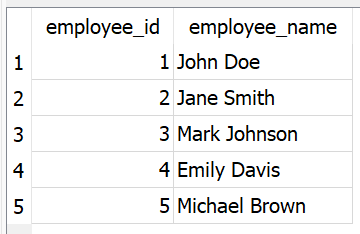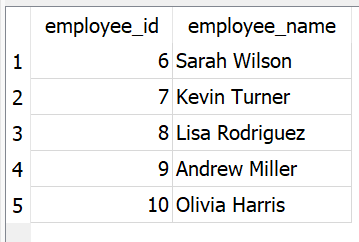How to Paginate Results in SQLite?
Last Updated :
05 Mar, 2024
Pagination is a common requirement in database applications, especially when dealing with large datasets. SQLite, a popular embedded relational database management system, offers several methods to paginate results efficiently. In this article, we will learn about what is the best way for efficient paging by understanding various methods along with the syntax and examples.
How to Paginate Results in SQLite?
When dealing with large datasets, retrieving all records at once can be inefficient and resource-demanding. Pagination allows us to break down the results into smaller, more manageable parts. SQLite provides several methods to achieve pagination efficiently. Below are the methods which help us to find best way to paginate results in SQLite are as follow:
- By Combining LIMIT and OFFSET
- Using the ROW_NUMBER() Window Function
Let’s set up an environment for efficient paging.
To understand what is the best way to paginate results in SQLite we need a table on which we will perform various operations and queries. Here we will create table called employees which contains employee_id and employee_name as Columns.
CREATE TABLE employees (
employee_id INTEGER PRIMARY KEY,
employee_name TEXT NOT NULL
)
The Table structure has been created shown below:

employees table created without any errors
After Inserting various records into the employee table, The table looks.

Employees
1. By Combining LIMIT and OFFSET
Syntax:
SELECT * FROM table_name LIMIT number_of_rows OFFSET starting_row;
Example 1: Basic Pagination
Here, we will simply replace the names. So, my table name is “employees” and “number_of_rows”, I’ll limit to 5.
SELECT * FROM employees LIMIT 5;
Output:

Basic Pagination
Explanation: Here, we are doing basic pagination. It simply retrieve the first 5 employees from the ‘employees‘ table. The ‘*‘ operator is used to select all columns from the ‘employees‘ table. The ‘LIMIT’ clause is helping in restricting the first 5 rows in the table. As, you can clearly see in the output image, it’s showing the details of the first 5 employees in the ‘employees‘ table.
Example 2: Paginating with Offset
Here, We will set the “starting_row” to 5 and “LIMIT” is 5 as well.
SELECT * FROM employees LIMIT 5 OFFSET 5;
Output:

Paginating with Offset
Explanation: In this example, it retrieve the next 5 employees starting from the 6th row. It means that, it should give rows from ‘Sarah Wilson‘ to ‘Olivia Harris‘ and that’s what we got as the output. The ‘LIMIT’ clause is restricting the result set to 5 rows and the ‘OFFSET’ clause is skipping the first 5 rows and starting from 6th rows onward.
2. Using the ROW_NUMBER() Window Function
As, we’ve already discussed that, in SQLite, there are two primary methods are widely used for Pagination, i.e. ‘LIMIT‘ and ‘OFFSET‘ clauses; let’s now move to another important concept in Pagination, i.e. “ROW_NUMBER()” Window Function. To understand this concept clearly, we’ll go through an example so that we get hand-on knowledge of the concept.
Syntax:
SELECT
ROW_NUMBER() OVER (ORDER BY column_name) AS row_num,
*
FROM table_name
LIMIT number_of_rows OFFSET starting_row;
Here, we need to replace “column_name” with the original column name of my ‘employee‘ table. So, the column name to replace is “employee_id“.
Example 1: Pagination with ROW_NUMBER()
-- Retrieve the first 5 entries using ROW_NUMBER() window function
SELECT
ROW_NUMBER() OVER (ORDER BY employee_id) AS row_num,
*
FROM employees
LIMIT 5;
Output:
.png)
Pagination with ROW_NUMBER()
Explanation: In this example, we have used the “ROW_NUMBER()” window function. This function helps to assign a unique number to each row based on a specified order. I also used the “ORDER BY” clause here and it’s helping to specify a specific order for “ROW_NUMBER()” function, i.e. ORDER BY “employee_id“.
This query should fetch the first 5 entries with thier corresplonding row numbers. And that’s what we got as our output.
Conclusion
In SQLite, by using the ‘LIMIT’ and ‘OFFSET’ clauses is an effective way to manage large datasets. To handle edge cases, some care should be taken. The dynamic pagination can be achieved using variables as we discussed it above in the examples. By understanding these concepts, it will help developers to to optimize query performance in applications depends on SQLite databases.
Mastering SQLite Pagination can boost user experience by presenting data in manageable parts efficiently. Alos, it will improve overall application responsiveness. So, basically, in SQLite, pagination capabilities provide a valuable tool for developers when working with large datasets, and it also offers flexibility and control over result sets.
Share your thoughts in the comments
Please Login to comment...